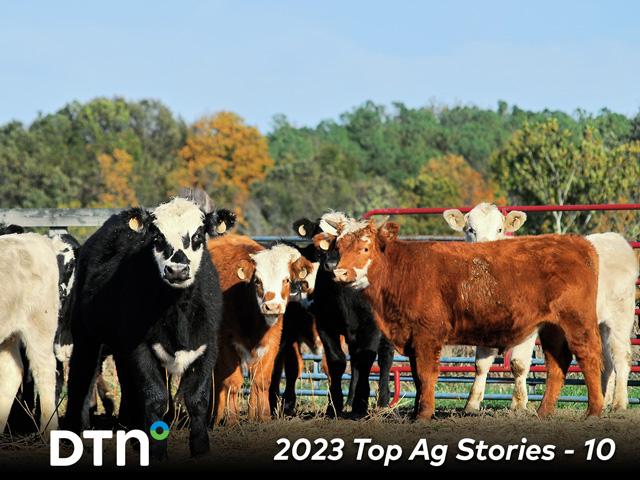Strategic Partnerships for Resilience: Bagley Risk Management
Strategic Partnerships for Resilience: Bagley Risk Management
Blog Article
Recognizing Animals Threat Defense (LRP) Insurance: A Comprehensive Guide
Navigating the world of livestock danger security (LRP) insurance can be a complicated undertaking for lots of in the agricultural market. This kind of insurance uses a safeguard versus market changes and unforeseen circumstances that could impact livestock manufacturers. By comprehending the ins and outs of LRP insurance, producers can make informed choices that may protect their operations from economic threats. From how LRP insurance policy functions to the different insurance coverage alternatives readily available, there is much to reveal in this comprehensive guide that could possibly form the way livestock manufacturers come close to risk administration in their companies.

How LRP Insurance Functions
Sometimes, recognizing the technicians of Animals Threat Security (LRP) insurance can be intricate, yet damaging down how it functions can supply clarity for farmers and ranchers. LRP insurance is a risk monitoring tool designed to secure livestock manufacturers against unexpected rate declines. The plan allows manufacturers to set an insurance coverage degree based on their certain needs, choosing the variety of head, weight range, and protection cost. As soon as the policy remains in place, if market rates fall below the coverage cost, manufacturers can file a claim for the difference. It is very important to note that LRP insurance policy is not an earnings guarantee; rather, it concentrates solely on rate risk defense. The coverage duration typically varies from 13 to 52 weeks, offering versatility for producers to select a period that aligns with their production cycle. By making use of LRP insurance, breeders and farmers can minimize the economic risks related to changing market prices, making sure greater stability in their operations.
Qualification and Coverage Options

When it comes to insurance coverage choices, LRP insurance policy offers manufacturers the flexibility to choose the coverage level, coverage duration, and recommendations that finest match their danger administration demands. By recognizing the qualification requirements and insurance coverage choices offered, livestock producers can make educated decisions to manage threat successfully.
Benefits And Drawbacks of LRP Insurance Policy
When reviewing Animals Threat Security (LRP) insurance, it is vital for livestock producers to consider the disadvantages and advantages fundamental in this danger management device.

One of the key benefits of LRP insurance is its capacity to provide protection against a decrease in livestock prices. In addition, LRP insurance provides a level of flexibility, enabling producers to personalize protection degrees and plan periods to match their details demands.
However, there are additionally some drawbacks to think about. One limitation of LRP insurance is that it does not protect against all sorts of risks, such as condition break outs or natural disasters. Costs can sometimes be pricey, specifically for producers with large animals herds. It is crucial for manufacturers to meticulously analyze their private risk exposure and financial scenario to establish if LRP insurance policy is the appropriate threat monitoring device for their procedure.
Comprehending LRP Insurance Premiums

Tips for Maximizing LRP Perks
Making best use of the benefits of Animals Danger Protection (LRP) insurance coverage requires critical preparation and aggressive risk administration - Bagley Risk Management. To make the many of your LRP insurance coverage, take into consideration the following suggestions:
Regularly Evaluate Market Conditions: Stay notified regarding market patterns and cost fluctuations in the livestock industry. By keeping track of these variables, you can make educated decisions about when to acquire LRP insurance coverage to protect against prospective losses.
Establish Realistic Insurance Coverage Levels: When choosing coverage levels, click to find out more consider your manufacturing prices, market value of animals, and prospective dangers - Bagley Risk Management. Setting reasonable protection levels guarantees that you are sufficiently secured without paying too much for unnecessary insurance coverage
Expand Your Protection: Rather than relying solely on LRP insurance policy, take into consideration expanding your risk management approaches. Incorporating LRP with other danger administration tools such as futures agreements or choices can offer extensive coverage against market uncertainties.
Evaluation and Change Insurance Coverage Consistently: As market problems change, occasionally review your LRP insurance coverage to ensure it aligns with your present threat direct exposure. Adjusting insurance coverage degrees and timing of purchases can help maximize your risk protection approach. By complying with these suggestions, you can maximize the benefits of LRP insurance policy and protect your livestock operation against unpredicted threats.
Conclusion
Finally, livestock danger protection (LRP) insurance is a useful tool for farmers to take care of the financial threats linked with their livestock procedures. By understanding exactly how LRP functions, eligibility and insurance coverage options, in addition to the advantages and disadvantages of this insurance policy, farmers can make educated choices to shield their incomes. By meticulously thinking about LRP costs and applying methods to make best use of benefits, farmers can reduce prospective losses and make certain the sustainability of their procedures.
Animals manufacturers interested in acquiring Animals Danger Defense (LRP) insurance can explore an array of qualification criteria and insurance coverage options customized to their specific animals operations.When it comes to protection choices, LRP insurance coverage offers manufacturers the flexibility to choose the coverage degree, insurance coverage period, and endorsements that ideal match their threat monitoring demands.To comprehend the intricacies of Livestock Danger Defense (LRP) insurance coverage completely, comprehending the elements influencing LRP insurance premiums is essential. LRP insurance coverage premiums are determined by various components, visit this page consisting of the insurance coverage degree picked, the expected price of livestock at the end of the insurance coverage duration, the kind of animals being guaranteed, and the length of the coverage duration.Evaluation and Adjust Coverage Frequently: As market conditions change, occasionally evaluate your LRP coverage to guarantee it lines up with your current threat direct exposure.
Report this page